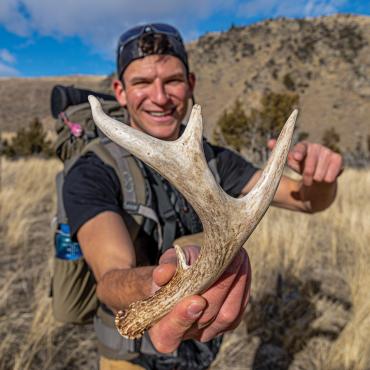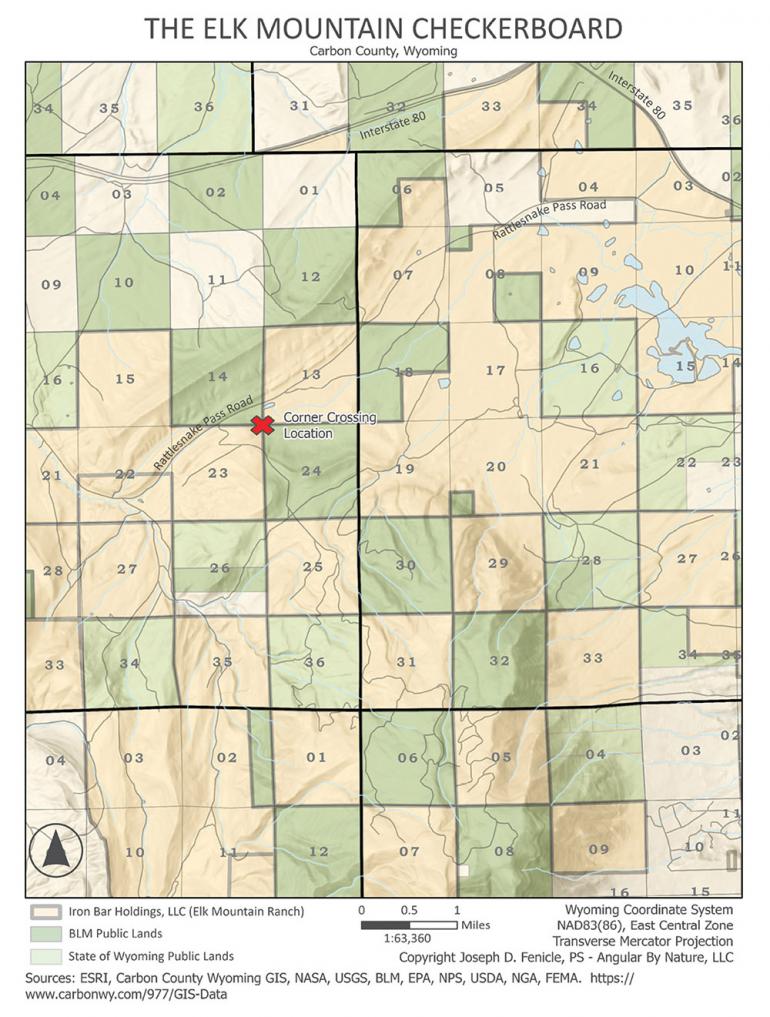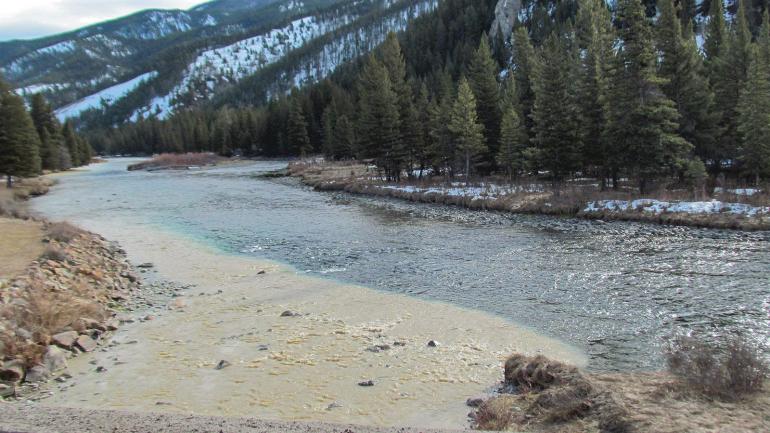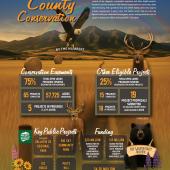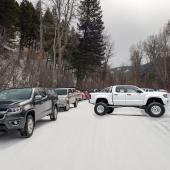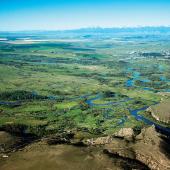News & Notes: Summer 2025
Updates and information from around southwest Montana.
DIRT DEBUT
On the east side of the Bridgers, new mountain-bike trails are in the works. Crosscut Mountain Sports Center, in conjunction with Bridger Bowl and the Southwest Montana Mountain Bike Association, are working this summer to build three new trails, totaling about seven miles. The project includes a climbing trail starting at the Crosscut biathlon range and ending just above the Alpine Cabin at Bridger, a downhill flow trail following a similar route, and a connector trail from the shooting range to the main Crosscut parking lot. The trails will be free to ride, but cyclists can purchase a voluntary trail pass from Crosscut to help offset the costs. In total, the project is expected to run up a $300,000 bill, and the organization is asking for donations of any size throughout the summer. The trails should be ready to rip by October, if everything goes according to plan. —Eli Fournier
ROUNDING THE CORNER
In March, a panel of three federal judges from the 10th Circuit Court sided with a group of four hunters who “corner-crossed” from one section of federal land to another in Carbon County, Wyoming in 2022. The hunters were facing a $9 million civil lawsuit from adjacent private landowner (and first-class a-hole) Fred Eshelman, who claimed his ranch would be devalued by that sum if hunters could use the public land within his ranch, which is accessible only via corner-crossing. The Wyoming chapter of Backcountry Hunters & Anglers raised nearly $118,000 to pay for the hunters’ legal fees, and ultimately the judges sided with the hunters, upholding a lower court’s decision. “The district court was correct to hold that the hunters could corner-cross as long as they did not physically touch [Eshelman’s] land,” the judges wrote. Notably, the ruling only applies to states represented by the 10th Circuit Court: Colorado, Kansas, New Mexico, Oklahoma, Utah, and Wyoming; and the hunters in this case crossed at a spot with a visible brass survey marker demarcating the corner. However, it still sets a precedent that any reasonable judge in Montana would likely uphold—though it would still take a court case to affirm. In the meantime, use discretion when deciding where, when, or how you plan to move between adjacent corners of public land—Montana Fish, Wildlife & Parks has remained conspicuously quiet about the issue ever since the court’s decision. (For more background and information on the underlying issue, read the article “At a Crossroads” by Don Thomas in our Spring 2023 issue.) —Eli Fournier
UPSTREAM BATTLE
No matter the time of year, John Meyer and his team at Cottonwood Environmental Law are always up to something. This summer, in addition to working on a new affordable-housing ballot initiative, they’re continuing to press for environmental accountability in Big Sky. In April, Cottonwood filed a Racketeer Influenced & Corrupt Organizations Act lawsuit claiming the former manager of the Big Sky Water & Sewer District falsified data to continue development without an appropriate plan for disposing of sewage. Similarly, this past spring, they worked with a scientist to run tracer dyes through a discharge pipe in the Yellowstone Club, in an effort to track contaminated water being released into the upper forks of the Gallatin. They’re planning to go to court in February over suspected Clean Water Act violations. And if all that wasn’t enough, Cottonwood is also joining the fray in the bison-management lawsuit the State of Montana filed against the National Park Service. Ultimately, Meyer wants to see bison roaming more freely on National Forest lands beyond the boundaries of Yellowstone—a goal that’s within reach, but has been delayed for years by politics and the livestock industry’s fear of brucellosis, a disease that can be transmitted to cattle (for more, read “In the Crosshairs” in our Spring 2023 issue). To get involved with the Cottonwood team, or for more details on the initiatives mentioned here, visit cottonwoodlaw.org. —Eli Fournier
PRICED OUT
A renowned sporting property near the Truman Gulch trailhead, has had to change its name after the resident elk herd left for greener pastures. The 200-member herd stuck it out for years—putting up with heavy hunting pressure and a loss of habitat due to pickleball court developments—but a recent “For Sale” sign accompanied by a $79 million price tag on the property sealed the deal. The herd, growing increasingly anxious at the thought of a new toolbag owner buying the place, has opted to take its chances on neighboring but smaller luxury properties, nearby actual ranches, and National Forest lands. After losing its most fashionable amenity, the new Runaway Elk Ranch has lowered the sale price accordingly, to a much more reasonable $69 million. —Joe King
WEST SIDE STORY
After a public-comment period last spring, Bridger Bowl finalized its expansion plan and will break ground this summer on several projects designed to increase skiable terrain, accessibility, and amenities. First and foremost is the opening of backside terrain, complete with a 15-person gondola to the Ridge from the trailhead at Truman Gulch. “This will disperse skiers and reduce pressure on the frontside lifts,” explains spokesperson Charla Tinn. Given the extreme nature of this backside terrain, a segmented zipline will also be installed for skier safety and customer satisfaction. Explains Tinn: “Several pickup points at key locations allow those who get in over their heads or lose their nerve to still enjoy a thrilling, selfie-worthy descent.”
To expand recreational diversity, pipelines and pumps will be trenched into Slushman’s Ravine, providing world-class ice-climbing opportunities on various cliff faces. Ice-only passes will be available for purchase, or skiers can opt for a ski-and-climb multisport surcharge on their lift tickets or season passes.
For enhanced after-hours entertainment, an enhanced Forest Service permit allows the Griz to host late-night raves on Thursday through Saturday nights, and the bus schedule will be similarly expanded, with the last ride departing at 2am. For those who simply can’t stanch the flow of rad apres vibes, a new underground hotel, four stories deep, will offer hourly rates and full concierge services. “Maintaining the existing aesthetics of the base area is paramount,” says Tinn. “So we went down, rather than up.”
Lastly, magic carpets will be installed along the Ridge, so that skiers and boarders can clip in, rip a vape, and enjoy the views as they’re whisked to Saddle Peak or Hidden Gully. “We’ve had a lot of complaints that we’ve been discriminating on the basis of fitness and ambition,” Tinn explains. “This particular upgrade will demonstrate our commitment to inclusivity.”
In order to finance the expansion, Bridger Bowl has sold a majority voting share to two well-known companies in a creative partnership arrangement. Details haven’t been released to the public, but according to one source, logo designs for the new “Yeti Club” are in the works, although some more nostalgic souls within the company are pushing for “Bridger Mountain Ranch.” After inking a deal with the new Lone Yeti Land Company, the resort’s board of directors recently purchased 25 unused dump trucks from FEMA and four abandoned aerial cranes from the Taliban, slated to deliver 50,000 tons of dirt to the Ridge, adding another 1,500 feet of vertical above Bridger Gully. —Joe King


